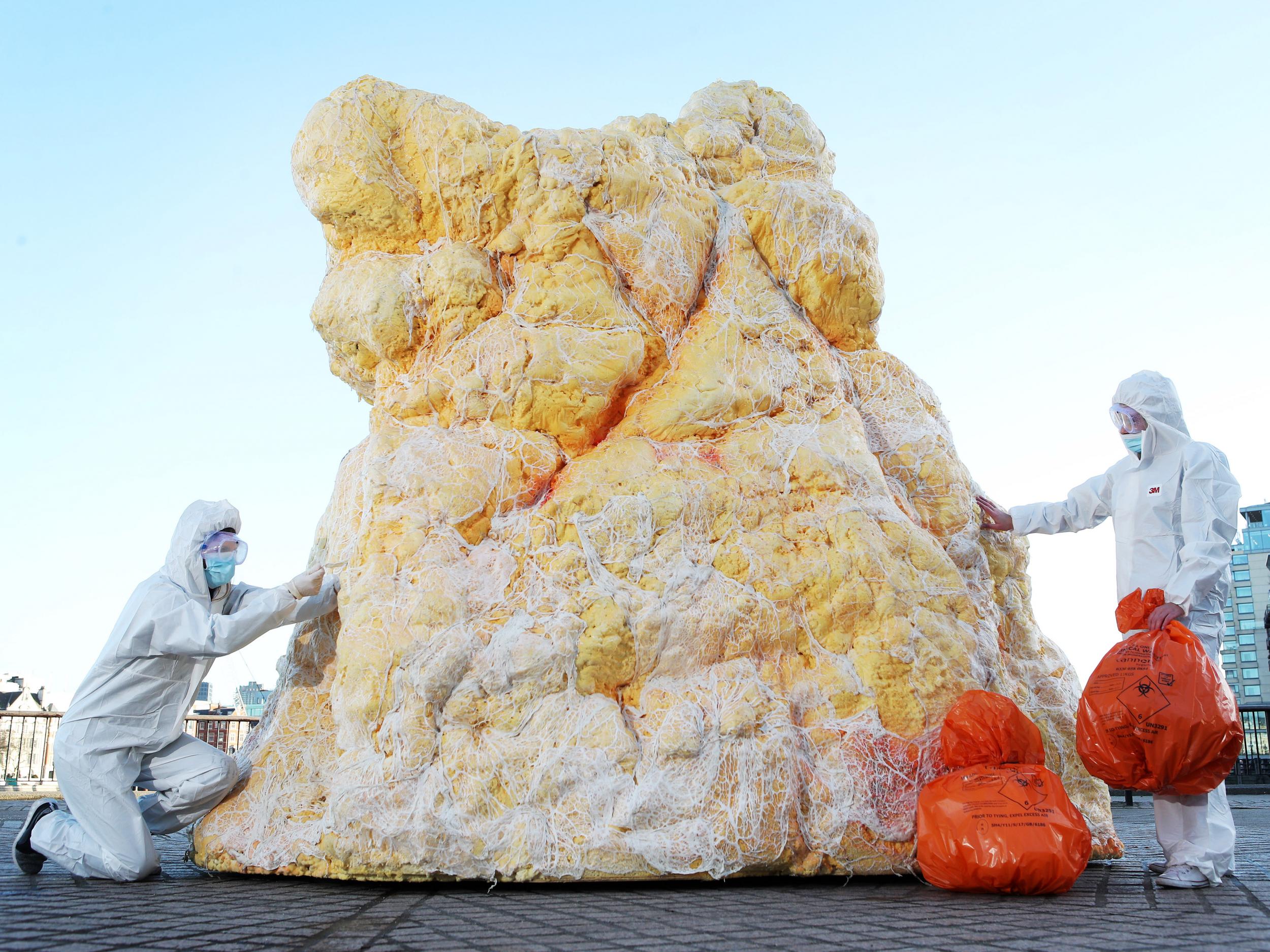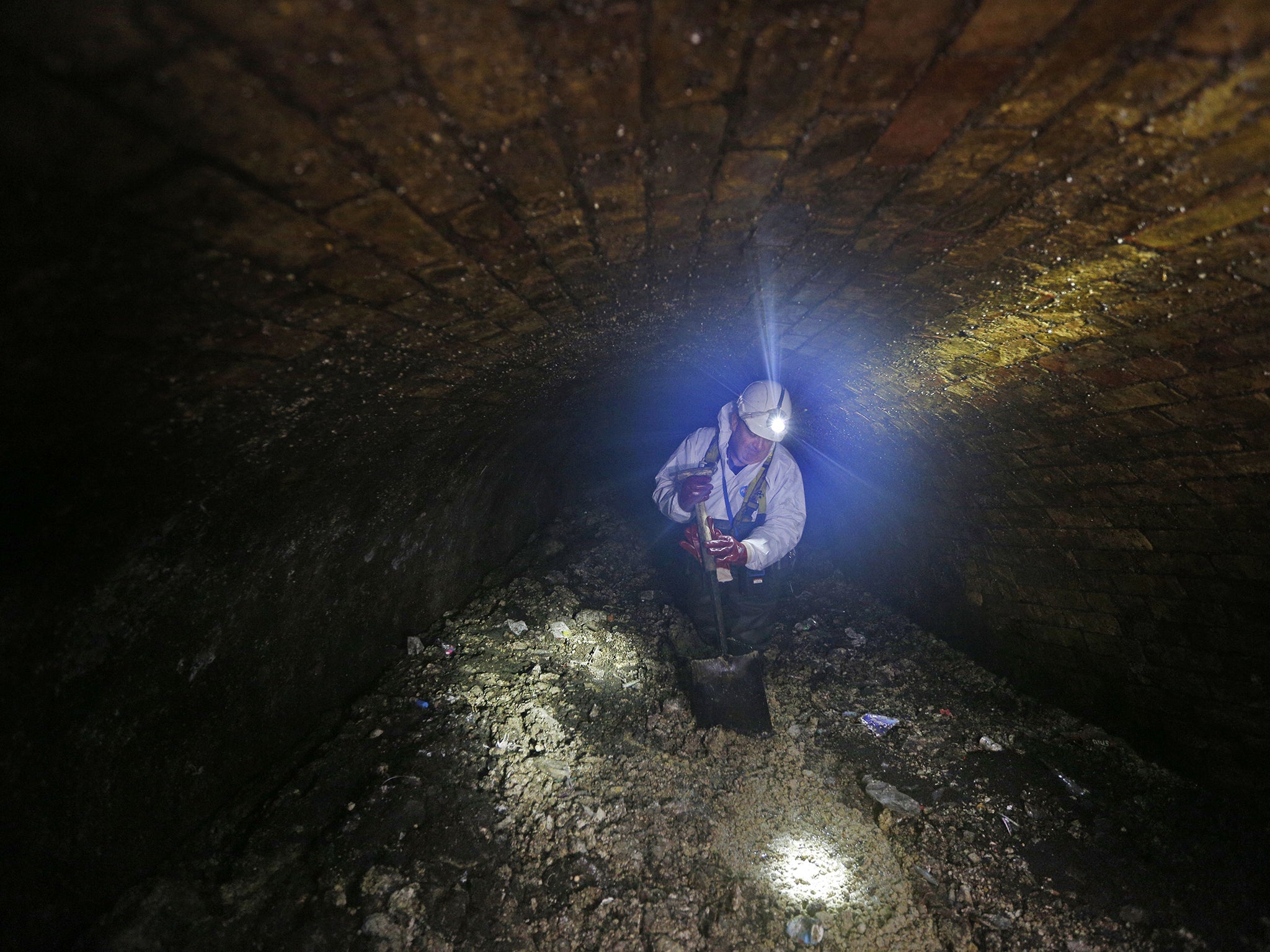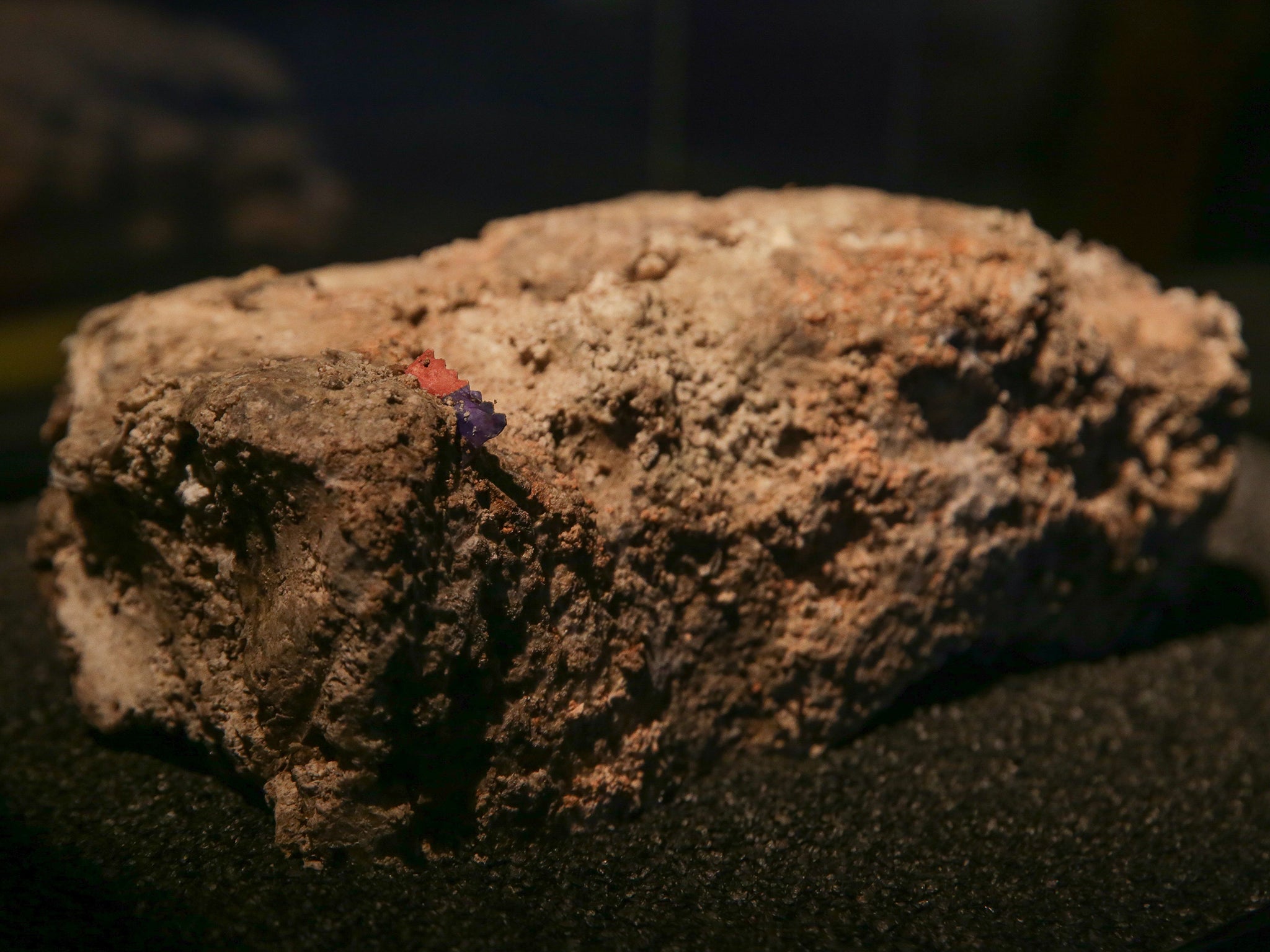Fatbergs: What do these blubbery clots say about our society and how can we deal with them?
If the soul of human fellowship could take on a physical form, it would most probably resemble one of the fatty leviathans invading our sewers, says Harry Cockburn


When I was a student, my girlfriend and I went on a winter weekend trip to Paris. We wore long black coats and stayed in a forlorn hotel in a narrow street in Bastille. We spent the weekend drinking in peculiar half-empty bars, and our one “activity” was to go on a romantic tour of Paris’s sewers.
Descending a stone staircase from street level, visitors step down from the busy riverside pavement into the cool gloom where the sewer’s vapours slowly envelop you. A rush of water can be heard, a moistness in the air becomes apparent, and ahead, a wide river flows from a tunnel into a well-lit central atrium.
It is like stepping into a scene from Charlie and the Chocolate Factory, though instead of gazing upon an edible paradise, everything smells like weak s**t and occasionally a floater sails swiftly along. Paris’s cavernous sewers have been one of the city of lights’ proudest achievements since they came into operation in their modern form in the 1850s, and it's easy to understand why. They are a no-nonsense powerhouse of efficient waste evacuation.
My girlfriend pulls her scarf over her nose, and we conduct ourselves around the various panels offering information on the construction of the sewers, their important role in French society, the impact they have had on literature and their fond place in the hearts of all French people.
But even more exciting than learning the history of these huge underground pipes is witnessing the effluvia in full flow. Glamorous lovely Paris is in full swing up above – all romance, art, polished brass, fine dining and fashion – and below is the thin brown soup the city emits.
Along with the croutons of motoring turds, there are innumerable other ingredients zooming quietly through the dark passages. Distended condoms glide through the gloom like lifeless jellyfish. Nappies, sanitary towels, tampons, a bit of Lego, a cabbage leaf, and plastic wrappers of all kinds swoosh past. I stand on a metal walkway above and gaze at the endless torrent of debris.
Eventually I am dragged away from the handrail and brought back up into the glittering world above by my girlfriend, who claims to have developed a particular nausea which only a sordid amount of wine can rectify.

That was 12 or 13 years ago. The sewer was a revelation – a fast-paced waterslide of filth. I imagine sewers like that burrowing beneath cities all over the world – cascading flumes of feculence roaring through labyrinthine brick tunnels, each carrying a relentless vortex of crap and litter.
It was all before fatbergs invaded my imagination. When did we first hear about fatbergs? Not very long ago. It seems like they’ve slithered out of nowhere and into British sewers as a special creation of the 21st century. Bergs of fat. We didn’t have them before, but they are now a major problem, costing millions to deal with. They are the cholesterol of the sewers – blubbery clots drifting through the arteries of the wastewater system where they eventually coagulate and form sclerotic blockages.
Fatbergs are the static, repugnant antithesis of all that Paris’s high-powered sewer stands for. They are the intestinal worms of a sick country. They are the dead Michelin men of the sewers – their pale flabby corpses piling up and amalgamating into one rubbery boulder of death.
And they are large. Look at reports carefully and you'll notice that fatbergs are almost always measured in terms of double-decker buses.
The rise of the fatbergs comes as our planet is groaning increasingly loudly under the weight of the pollution we are generating. They appear not to be a good omen
Their insidious assault on the public consciousness perhaps began in the early 2010s. The first significant example appears to have been noted in 2013 when something huge astonished workers in a sewer in Kingston-upon-Thames in London. “If we hadn’t discovered it in time, raw sewage could have started spurting out of manholes across the whole of Kingston,” a Thames Water spokesman colourfully put it at the time.
This stupendous lardy excrescence was the size of just one double-decker bus, and at the time was the largest congealed mass of rotting food ever found in the wastewater system. It made headlines across the country, and prompted the formation of Thames Water’s fatberg squad – a crack team of talented sewage treatment experts who quickly became specialised in fatberg elimination.
But we hadn’t seen anything yet.
Even with a team of workers chipping away at it seven days a week, and costing the authorities £1m a month, it took two months to excavate this shameful artefact
In 2014 a fatberg over 70 metres in length (seven double-decker buses), was uncovered in Shepherd’s Bush. Workers hoping to climb down a ladder into the large sewer cavity lifted a drain cover to discover a hideous wall – the gargantuan solid mass had filled the void entirely. The pressure-hose enema required to cleanse the impacted bowels of this part of west London took over a week.
But the following year another monster (the length of four double-decker buses) was found nearby, curling through the subterranean conduits of Chelsea. This 10-ton fatlog was so massive it broke the sewage pipes, and the removal team were forced to dig through the mouldering lard crags by hand.
The next year, 2016, was an off year for fatbergs in the UK, but down in Australia workers caught their first glimpse of these great white sewer sharks. A one-ton berg (0.83 double-decker buses) made national headlines, shocking the nation.
In 2017, we hit the motherlode. The largest fatberg discovered to date was the one constipating the guts of Whitechapel in east London. This rancid colossus was 250 metres long (about 25 double-decker buses), and weighed the same as 11 double-decker buses. Rats were living inside it. Even with a team of workers chipping away at it seven days a week, and costing the authorities £1m a month, it took two months to excavate this shameful artefact.

As a celebration afterwards, two chunks of the dried fatberg were put on display at the Museum of London. The same year, the US had its first taste of fatberg. Unfortunately it wasn’t detected until it was already too late. A million gallons of raw American sewage erupted in Baltimore amid heavy rains, and was washed into the nearby river system.
In mid-2018 a fatberg discovered beneath London’s Southbank was so massive its full extent is still not known. Some say it reaches all the way round the earth and back again. Others say it goes further – reaching into different dimensions and leaving an oily residue. This year, another leviathan has been found. In the small seaside town of Sidmouth in Devon, a stomach-churning mass, six double-decker buses’ worth, was discovered in the sewer on the seafront.
They have arrived when we need them most. They are messengers here to hold up a mirror to society and show us what a lumpen blight we have become to the world
I wrote The Independent’s news story about it. “This is not Sidmouth’s idea of fun,” one woman angrily told me when I asked her if they were planning to put chunks of it on display as they had in London. The rise of the fatbergs comes as our planet is groaning increasingly loudly under the weight of the pollution we are generating. They appear not to be a good omen.
It is possible their arrival could even spell disaster: in addition to being stinking juggernauts of vile rejectamenta, they provide an ideal breeding ground for potentially lethal infectious bacteria. Listeria, campylobacter and E coli were all thriving in the Whitechapel fatberg, according to scientists who conducted an “autopsy” of it.
Wouldn’t it be embarrassing – but also somehow fitting – if this was how our civilisation met its end?
Fatbergs are the direct product of unsustainable consumerism and our willful desecration of the environment. Maybe on some level we deserve to inhale the poisonous spores of our own creation.
Ambivalence towards chucking wet wipes down the toilet, along with nappies, condoms and other plastics is one of the key contributors to their formation. These non-disintegrating items impede the flow of wastewater, trapping oils and fats, which congeal and grow like dirty snowballs.
It is the growing popularity of wet wipes as a compliment to traditional dry lavatory paper that has precipitated the arrival of the bergs. Our boundless desire for convenience at all costs is having a very real impact. According to Thames Water, many well-known brands whose wipes are labelled as suitable for flushing are, in reality, slow to disintegrate, and cause blockages. Wet wipes are responsible for a staggering 93 per cent of all sewer blockages, according to Water UK.
Recently it has been suggested there is a correlation between wealth and fatbergs, as luxury varieties of quilted bog paper also take longer to break up. In the UK fatbergs cost an estimated £19m a year to clear, a sum paid for by utility companies through our bills. Though there are periodic newsworthy monsters, the nation’s sewers at large are congested with FOG (fat, oil and grease) and the problem is getting worse.
In London, where the most stunning examples have been unwittingly cultivated, Thames Water estimated in 2017 that 90 per cent of restaurants and fast food takeaways were contributing to the problem by pouring their waste FOG and food scraps down the plughole, instead of installing grease traps.
But even if these were rolled out more widely, the problem will not disappear as normal households are also major contributors. One glimmer of a silver lining in the whole pestilent debacle has emerged: Whitechapel’s fatberg was converted into about 10,000 litres of biodiesel – enough to power 350 double-decker buses for one day. Sidmouth town council is also discussing disposing of their resident berg in the same way.
Though they haunt us like rotten ghosts, I love something about fatbergs, or at least I harbour a morbid fascination for them. If the soul of our civilisation took a physical form, I’d argue it would closely resemble a fatberg. They have arrived when we need them most. They are messengers, here to hold up a mirror to society and show us what a lumpen blight we have become to the world.
They are the Dorian Gray portraits storing our collective moral and physical failings. Instead of sitting in a gilt frame in a corner of the attic, they lie putrefying in our sewers, and despite the horror, every so often we can’t resist lifting the manhole cover for another little look.
Join our commenting forum
Join thought-provoking conversations, follow other Independent readers and see their replies
Comments